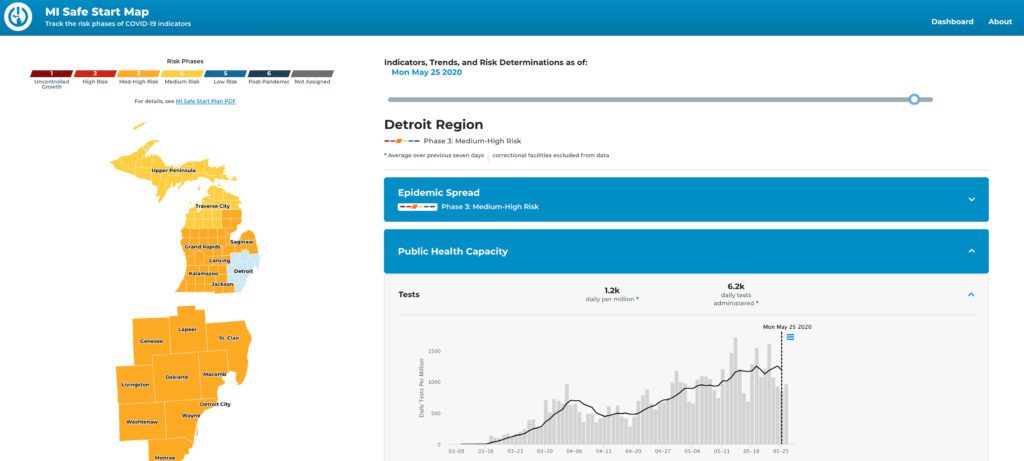‘Noncritical’ in-person research begins ramping up, with public-health protocols.
The post Lights in the labs – and eyes – of researchers coming back to work appeared first on Michigan Engineering News.
‘Noncritical’ in-person research begins ramping up, with public-health protocols.
The post Lights in the labs – and eyes – of researchers coming back to work appeared first on Michigan Engineering News.

The web tools will help state officials identify potential hotspots as they reopen Michigan to business.
As COVID-19 looks more like a disease of the immune system, a Michigan engineer is working with doctors to look at how immune responses differ between mild and severe cases.
The post Engineering immunity: Profiling COVID-19 immune responses and developing a vaccine appeared first on Engineering Research News.
Virtual copies of nuclear reactors could enable smarter maintenance for current reactors and more automation for advanced reactors.
The post $5.2M for digital twins of nuclear reactors could bring down nuclear energy costs appeared first on Michigan Engineering News.

Clinicians and researchers published two proof-of-concept papers.
The post Two new devices protect health care workers, help patients during COVID-19 appeared first on Engineering Research News.
Predictive model could help care providers stay safe, anticipate patient needs.
The post Faster than COVID: a computer model that predicts the disease’s next move appeared first on Michigan Engineering News.
Part of the team that brought us the world’s smallest computer in 2015 brings the future of computing technology into the present.
The post Battery-free sensor startup takes aim at industrial efficiency appeared first on Michigan Engineering News.
Is there a way to get biofuels right?
The post We’re doing ethanol wrong appeared first on Michigan Engineering News.
U-M startup says robotic food deliveries have quadrupled.
The post Delivery robots help Ann Arbor restaurants weather COVID appeared first on Michigan Engineering News.
Magnetic flux findings suggest “profound consequences for basic solar processes.”
The post Switchbacks and spikes: Parker Solar Probe data consistent with 20-year-old theory appeared first on Michigan Engineering News.